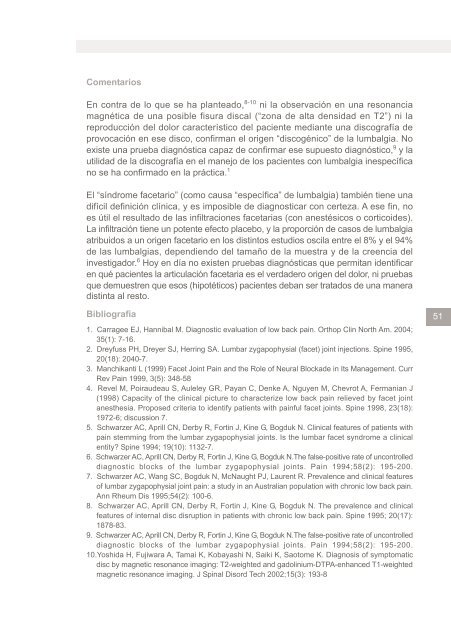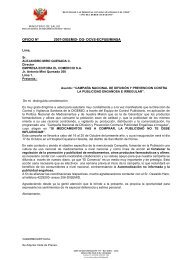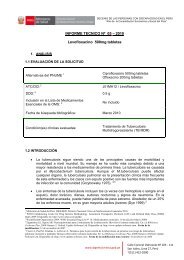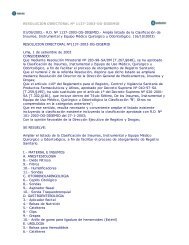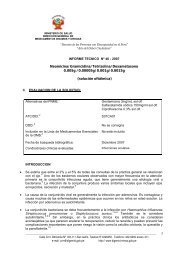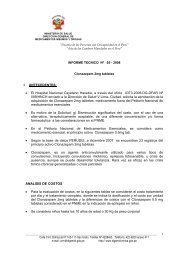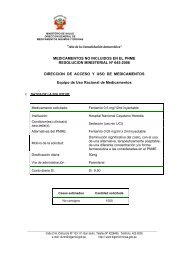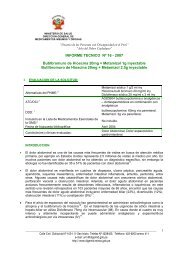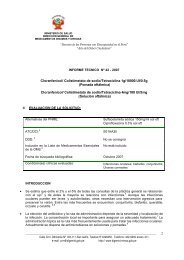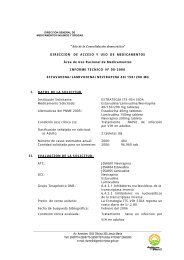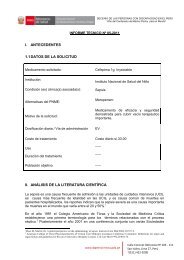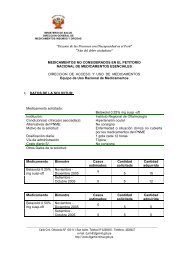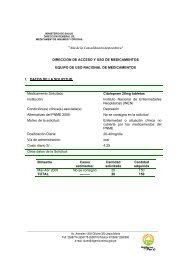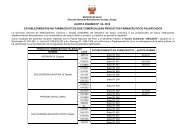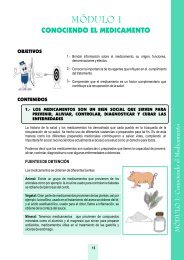50 503. Fisher MA (2002) Electrophysiology of radiculopathies. Clin Neurophysiol, 113(3): 317-35.4. Floyd WF, Silver PH (1955) The function of the erectores spinae muscles in certain movementsand postures in man. J Physiol, 129(1): 184-203.5. Geisser ME, Haig AJ, Wallbom AS, Wiggert EA (2004) Pain-related fear, lumbar flexion, anddynamic EMG among persons with chronic musculoskeletal low back pain. Clin J Pain, 20(2):61-9.6. Haig AJ (2002) Paraspinal denervation and the spinal degenerative cascade. Spine J, 2(5):372–80.7. Hodges PW (2003) Core stability exercise in chronic low back pain. Orthop Clin North Am, 34(2):245-54.8. Hodges PW, Moseley G (2003) Pain and motor control of the lumbopelvic region: effect andpossible mechanisms. J Electromyogr Kinesiol, 13(4): 361-70.9. Mannion AF, Connolly B, Wood K, Dolan P (1997) The use of surface EMG power spectralanalysis in the evaluation of back muscle function. J Rehab Res Devel, 34(4): 427-39.10.Mannion AF, Junge A, Taimela S, Muntener M, Lorenzo K, Dvorak J (2001a) Active therapy forchronic low back pain: part 3. Factors influencing self-rated disability and its change followingtherapy. Spine, 26(8): 920-9.11.Mannion AF, Taimela S, Muntener M, Dvorak J (2001b) Active therapy for chronic low back painpart 1. Effects on back muscle activation, fatigability, and strength. Spine, 26(8): 897-908.12.Mohseni-Bandpei MA, Watson MJ, Richardson B (2000) Application of surface electromyographyin the assessment of low back pain: a literature review. Physical Therapy Reviews, 5(2): 93-105.13.Pullman SL, Goodin DS, Marquinez AI, Tabbal S, Rubin M (2000) Clinical utility of surface EMG:report of the therapeutics and technology assessment subcommittee of the American Academyof Neurology. Neurology, 55(2): 171-7.14.Travlos A, Trueman S, Eisen A (1995) Monopolar needle evaluation of paraspinal musculaturein the cervical, thoracic, and lumbar regions and the effects of aging. Muscle Nerve, 18(2): 196-200.15.van Dieen JH, Selen LP, Cholewicki J (2003) Trunk muscle activation in low-back pain patients,an analysis of the literature. J Electromyogr Kinesiol, 13(4): 333-51.4.6 OTRAS PRUEBAS DIAGNÓSTICAS4.6.1 Pruebas de provocación o alivio (discografía e infiltracionesfacetarias con anestésicos).RecomendaciónNo se recomienda prescribir discografía (de provocación o analgésica) por lumbalgiainespecíficaNo se recomienda prescribir infiltraciones facetarias diagnósticas por lumbalgiainespecíficaSíntesis de la evidenciaLa discografía no es una prueba fiable para determinar el origen“discogénico” del dolor de espaldaLas pruebas de provocación (infiltración) facetaria no son fiablespara determinar el origen “facetario” del dolor de espalda.Nivel BNivel B
ComentariosEn contra de lo que se ha planteado, 8-10 ni la observación en una resonanciamagnética de una posible fisura discal (“zona de alta densidad en T2”) ni lareproducción del dolor característico del paciente mediante una discografía deprovocación en ese disco, confirman el origen “discogénico” de la lumbalgia. Noexiste una prueba diagnóstica capaz de confirmar ese supuesto diagnóstico, 9 y lautilidad de la discografía en el manejo de los pacientes con lumbalgia inespecíficano se ha confirmado en la práctica. 1El “síndrome facetario” (como causa “específica” de lumbalgia) también tiene unadifícil definición clínica, y es imposible de diagnosticar con certeza. A ese fin, noes útil el resultado de las infiltraciones facetarias (con anestésicos o corticoides).La infiltración tiene un potente efecto placebo, y la proporción de casos de lumbalgiaatribuidos a un origen facetario en los distintos estudios oscila entre el 8% y el 94%de las lumbalgias, dependiendo del tamaño de la muestra y de la creencia delinvestigador. 6 Hoy en día no existen pruebas diagnósticas que permitan identificaren qué pacientes la articulación facetaria es el verdadero origen del dolor, ni pruebasque demuestren que esos (hipotéticos) pacientes deban ser tratados de una maneradistinta al resto.Bibliografía1. Carragee EJ, Hannibal M. Diagnostic evaluation of low back pain. Orthop Clin North Am. 2004;35(1): 7-16.2. Dreyfuss PH, Dreyer SJ, Herring SA. Lumbar zygapophysial (facet) joint injections. Spine 1995,20(18): 2040-7.3. Manchikanti L (1999) Facet Joint Pain and the Role of Neural Blockade in Its Management. CurrRev Pain 1999, 3(5): 348-584. Revel M, Poiraudeau S, Auleley GR, Payan C, Denke A, Nguyen M, Chevrot A, Fermanian J(1998) Capacity of the clinical picture to characterize low back pain relieved by facet jointanesthesia. Proposed criteria to identify patients with painful facet joints. Spine 1998, 23(18):1972-6; discussion 7.5. Schwarzer AC, Aprill CN, Derby R, Fortin J, Kine G, Bogduk N. Clinical features of patients withpain stemming from the lumbar zygapophysial joints. Is the lumbar facet syndrome a clinicalentity? Spine 1994; 19(10): 1132-7.6. Schwarzer AC, Aprill CN, Derby R, Fortin J, Kine G, Bogduk N.The false-positive rate of uncontrolleddiagnostic blocks of the lumbar zygapophysial joints. Pain 1994;58(2): 195-200.7. Schwarzer AC, Wang SC, Bogduk N, McNaught PJ, Laurent R. Prevalence and clinical featuresof lumbar zygapophysial joint pain: a study in an Australian population with chronic low back pain.Ann Rheum Dis 1995;54(2): 100-6.8. Schwarzer AC, Aprill CN, Derby R, Fortin J, Kine G, Bogduk N. The prevalence and clinicalfeatures of internal disc disruption in patients with chronic low back pain. Spine 1995; 20(17):1878-83.9. Schwarzer AC, Aprill CN, Derby R, Fortin J, Kine G, Bogduk N.The false-positive rate of uncontrolleddiagnostic blocks of the lumbar zygapophysial joints. Pain 1994;58(2): 195-200.10.Yoshida H, Fujiwara A, Tamai K, Kobayashi N, Saiki K, Saotome K. Diagnosis of symptomaticdisc by magnetic resonance imaging: T2-weighted and gadolinium-DTPA-enhanced T1-weightedmagnetic resonance imaging. J Spinal Disord Tech 2002;15(3): 193-851 51
- Page 2: La versión española de la Guía d
- Page 9 and 10: 1.4 Miembros el Grupo de Trabajo so
- Page 11 and 12: • La Dra. Dña. Violeta González
- Page 13 and 14: · El grupo sobre Lumbalgia Crónic
- Page 15 and 16: los pocos meses de nacer los Grupos
- Page 17 and 18: utinaria, en la que es poco realist
- Page 19 and 20: c) Para evitar que las eventuales v
- Page 21 and 22: Periódicamente, el Grupo analizar
- Page 23: en el ámbito de las patologías me
- Page 26: Ejemplos de situaciones considerada
- Page 31 and 32: Posteriormente, el conjunto de la G
- Page 33 and 34: al fundamento científico de las re
- Page 35 and 36: · Las medidas recomendadas que est
- Page 37 and 38: 23. Se han registrado los conflicto
- Page 39 and 40: CSAG Committee on Back Pain. Manage
- Page 41 and 42: 4.1 CLASIFICACIÓN DIAGNÓSTICA.Rec
- Page 43 and 44: · Conductas inadecuadas (conductas
- Page 45 and 46: · La gammagrafía y el SPECT puede
- Page 47 and 48: diagnostic strategies. J Gen Intern
- Page 49: 45.Yoshida H, Fujiwara A, Tamai K,
- Page 53 and 54: El hallazgo de signos de compromiso
- Page 55 and 56: · La lumbalgia inespecífica no se
- Page 57 and 58: 9. Karjalainen K, Malmivaara A, Mut
- Page 59 and 60: 6.1.3 Mantener el mayor grado posib
- Page 61 and 62: En la lumbalgia crónica:Los antiin
- Page 63 and 64: 20.Vetter G, Bruggemann G, Lettko M
- Page 65 and 66: Síntesis de la evidenciaEn las dos
- Page 67 and 68: 26.Ghoname EA, Craig WF, White PF,
- Page 69 and 70: 67.O'Sullivan PB, Phyty GD, Twomey
- Page 71 and 72: El efecto de las “Escuelas de la
- Page 73 and 74: ComentariosLos antidepresivos tric
- Page 75 and 76: ComentariosDe acuerdo con el único
- Page 77 and 78: 33.Turner JA, Clancy S, McQuade KJ,
- Page 79 and 80: 2. Jamison RN, Raymond SA, Slawsby
- Page 81 and 82: the medical care of chronic low bac
- Page 83 and 84: Síntesis de la evidenciaLa PENS es
- Page 85 and 86: En España, en 2002, la tasa de rea
- Page 87 and 88: 24.Keller A, Brox JI, Gunderson R,
- Page 89 and 90: EvidenciaNingún estudio ha analiza
- Page 91 and 92: ComentariosEste ese una de las dos
- Page 93 and 94: La evidencia sobre eficacia procede
- Page 95 and 96: ) En comparación con la infiltraci
- Page 97 and 98: 6.3.5. Infiltraciones facetarias de
- Page 99 and 100: Bibliografía1. Dechow E, Davies RK
- Page 101 and 102:
12. Oh WS, Shim JC (2004) A randomi
- Page 103 and 104:
Los efectos secundarios más graves
- Page 105 and 106:
26.Hemmila HM, Keinanen-Kiukaanniem
- Page 107 and 108:
ComentariosLa mayoría de los estud
- Page 109 and 110:
23.Leake R, Broderick JE (1998) Tre
- Page 111 and 112:
5. Hernandez-Reif M, Field T, Krasn
- Page 113 and 114:
) Las características técnicas de
- Page 115 and 116:
6.3.18 Gabapentina.RecomendaciónNo
- Page 117 and 118:
· Las intervenciones ergonómicas
- Page 119 and 120:
Balagué F, Skovron ML, Nordin M, D
- Page 121 and 122:
a population of school children. Eu
- Page 123 and 124:
Leclaire R, Esdaile JM, Suissa S, R
- Page 125 and 126:
Journal 12: 581-588.Sjölie AN, Lju
- Page 127 and 128:
ANEXO 1: Criterios para definir la
- Page 129 and 130:
¿La selección de los pacientes a
- Page 131 and 132:
ANEXO 3: Niveles de evidencia.Nivel
- Page 133:
Niveles de evidencia sobre prevenci


